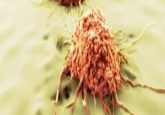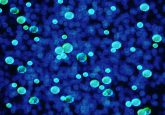New discoveries in head and neck cancers: can this help personalize therapy in the future?
Scientists from the University of California, Los Angeles (UCLA; CA, USA) have recently uncovered a link between a specific protein and head and neck cancers in individuals infected with human papilloma virus (HPV). HPV is the most commonly transferred sexually transmitted infection, and it is estimated that almost all men and women who are sexually active will catch the infection in their lifetime.
Eri Srivatsan and Marilene Wang (UCLA Jonsson Comprehensive Cancer Center), lead authors of the study, discovered the link between the protein gigaxonin, and head and neck cancers when investigating the drug cisplatin, which is effective at killing cancer cells by targeting the protein p16. However, in the last few years more p16-positive HPV-related head and neck cancers have been seen, mostly in younger nonsmoking adults who were previously not deemed at high risk of head and neck cancer.
The authors looked at the interaction of p16 and gigaxonin in the nucleus of the cancer after being treated with cisplatin and found that it stopped the cell cycle. This allowed the chemotherapy to prevent the cell from growing, killing the cancer cell.
The authors also looked at 103 archival clinical samples from head and neck cancers to analyze the relationship between p16 expression in the nucleus and cancer-free survival. In cancers with p16 expression, better survival rates were observed than those without p16.
“This discovery opens new possibilities in the diagnosis and treatment of HPV-positive head and neck cancers,” commented Srivatsan. In the future, the authors hope that these discoveries will help develop personalized targeted therapy for head and neck cancer patients, and help reduce the adverse effects of chemo- and radio-therapy treatment.
Veena MS, Wilken R, Zheng JY et al. p16 and gigaxonin are associated with the ubiquitination of NFκB in cisplatin induced senescence of cancer cells. J. Biol. Chem. doi:10.1074/jbc.M114.568543jbc.M114.568543. (2014) (Epub ahead of print); University of California, Los Angeles press release



